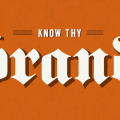 The Azusa Street Revival that began on April 9, 1906 is considered by most church historians to be the genesis of the modern-day Pentecostal movement. Life magazine and the USA Today have listed the Azusa Street Revival as being one of the top 100 nation impacting events of the 20th century. The Azusa Street Revival unleashed Christianity’s “next wave” growing to over 500 million adherents world-wide.
The Azusa Street Revival that began on April 9, 1906 is considered by most church historians to be the genesis of the modern-day Pentecostal movement. Life magazine and the USA Today have listed the Azusa Street Revival as being one of the top 100 nation impacting events of the 20th century. The Azusa Street Revival unleashed Christianity’s “next wave” growing to over 500 million adherents world-wide.
What happened at Azusa Street during the first three years was to change the course of church, national and world history. Although the mission building measured only 40 by 60 feet, as many as 600 persons jammed inside while hundreds more looked in through the windows. The central attraction was tongues and traditional black worship styles that included shouting and the holy dance. There was no order of service, since “the Holy Ghost was in control.” There were three services a day and many times they ran together for days.
Today the mission that hosted this world changing phenomena is gone and there is a parking lot and a plaque in it’s place. The humble, unassuming man that lead this great revival is hardly known. William J. Seymour was the son of slaves, blind in one eye, self-educated, and a black holiness preacher. However, Sidney Ahlstrom, noted church historian and Yale professor, said, “William J. Seymour was the most influential black leader in American religious history.”
While the revival is most widely known for the ecstatic utterances known as tongues, it’s hallmark was not just the glossolalia, but rather the unity and evangelistic fervor that was birthed from Seymour’s humble leadership and passion for the Mission of God. To Seymour, tongues was not the only miracle of Azusa Street: “Don’t go out of here talking about tongues: talk about Jesus,” he admonished. To Seymour the most significant miracle was that of racial reconciliation. Blacks and whites worked together in harmony under the direction of a black pastor, a miracle in the days of Jim Crow segregation. This led Frank Bartleman to report, “At Azusa Street, the color line was washed away in the Blood.”
At the height of the Azusa Street revival Seymour prophesied, “We are on the verge of the greatest miracle the world has ever seen.” The miracle he was referring to was for true love and unity to be revealed to the world by the Church. It would be the reconciliation of races, ethnicities, creeds, generations and gender as a sign of the coming Kingdom and the end of this age. Seymour saw the Church as the anti-thesis of the Tower of Babel, where the race of man was scattered, and as a living example of the one-ness that Jesus prayed for all His disciples.
From the first Day of Pentecost to the Azusa Street Revival one of the signs of the Holy Spirit’s presence and empowerment would be an unnatural unity that transcends human culture, language, social station, doctrine, age and sex. While the denominations, fellowships and movements that were birthed out of the Azusa Street Revival were largely segregated and even Seymour’s church dwindled and became a black congregation, the greatest miracle of Azusa was the setting aside the powerful human forces of bigotry, pride and arrogance to share in the Mission of God, promote the bonds of Christ’s love, and embrace the unity of His Spirit.




0 Comments